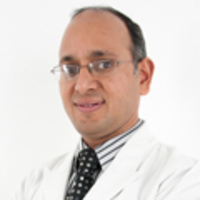Why do we feel such a surge of love towards our babies so soon after they are born? Why does being hugged, being in love, or for that matter, having sex, feel so good?
The answer, in part, is because all of these situations trigger the release of oxytocin in the body. For this reason, oxytocin is colloquially known as the “love hormone”.
Hormones are naturally occurring chemicals in the body that mediate messages within it and ensure correct development and smooth functioning. Oxytocin, along with vasopressin, is a hormone produced by the hypothalamus and released by the posterior pituitary lobe (in the brain).
If you are wondering, “Do men produce oxytocin?”, then the answer is yes, absolutely. However, while it is synthesised in both sexes in equal measure (for example, both new moms and new dads feel the oxytocin-powered surge of love towards their baby), oxytocin has a more significant role in females.
(If you're wondering if babies produce oxytocin, the answer to that is also yes!)
Romantic and sexual intimacy, positive social stimuli, childbirth and breastfeeding are important cues for the production and release of oxytocin. A positive feedback mechanism ensures that the hormone continues to be secreted for progressive action so long as the stimulus is present.
The hormone exerts effects on the uterus, breasts, reproductive tracts, prostate and kidneys. Additionally, it influences psychological well-being.
In some situations, oxytocin can be supplied from the outside—formulations are sometimes used in obstetrics to induce labour or to support it. These formulations may be injected in the muscle, vein or given by intranasal spray. Some side effects like high blood pressure or low blood pressure, fast heartbeat or slow heartbeat, water and sodium retention, excessively strong uterine contractions, uterine rupture and birth asphyxiation can arise in some patients.
Read on to know all about oxytocin, the hormone that promotes love, social bonding, parent-child bonding, relations of trust, and which enables natural childbirth and breastfeeding.




































